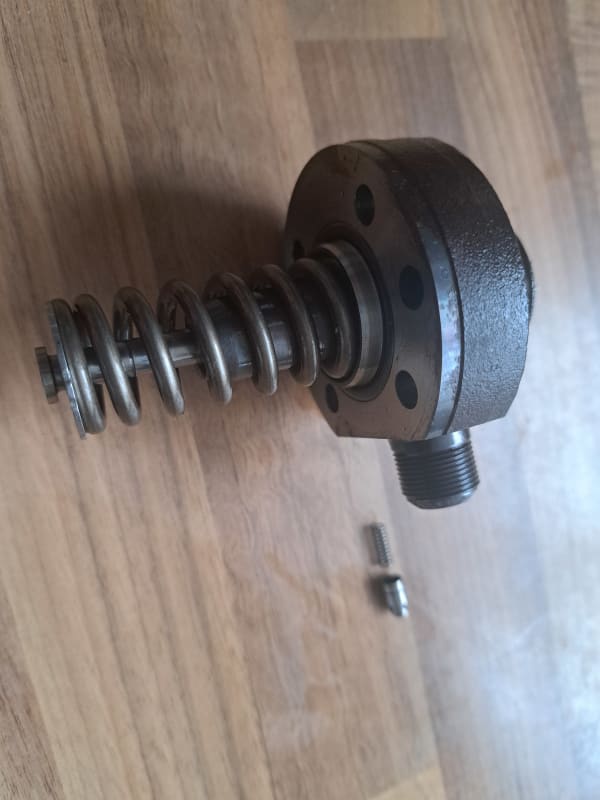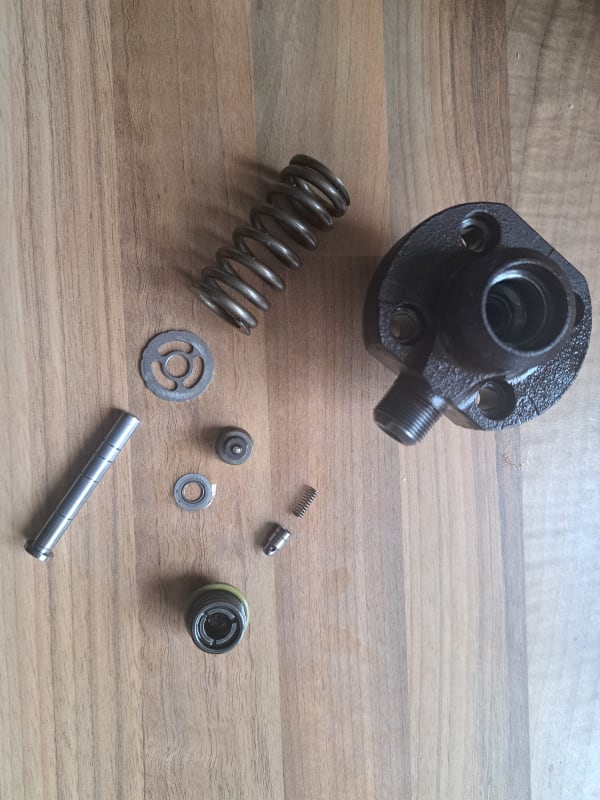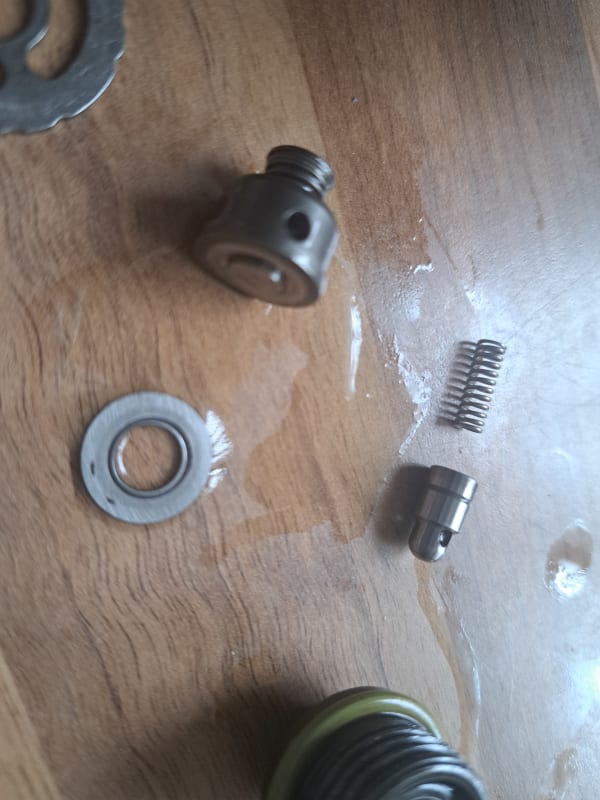Firstly, apologies if this is in the wrong category.
Very glad I stumbled across this forum, very knowledgeable individuals here who hopefully can assist.
My issue is low fuel rail pressure and highly suspect the pump to be at fault.
My understanding of how the fuel high pressure supply from the pumps head unit maybe somewhat simple but here goes.
The ecu controlled quantity control valve delivers the required amount of fuel to the delivery valve in the pump head where it is allowed to flow when the plunger is forced down by the plunger spring which causes a suction on the delivery valve hence opening the valve. When the plunger is driven back up the plunger compresses the fuel at the same time assisting the delivery valve spring to close the valve and thereby forcing the fuel out of the high pressure outlet by way of a one way valve.
Ok,so my questions are
1) possibly a dumb one but would you expect this to work at atmospheric air pressure? or are oil and oil pressures required? would I be correct in thinking the pumps outlet pressure should be greater than the pressure regulated in the rail? The outlet valve surely needs to be sealed closed so the suction can be achieved at a lower pressure otherwise it would be overcome by the higher rail pressure leakage. Suppose there would be greater pressure when the plunger is on the upward motion.
2) should the suction from the plunger be able to draw air/fuel from the high pressure outlet valve? I would think not but this is exactly whats happening which is why I believe the pump is causing the low pressure issue however is the fuel delivery valve pressure assisted from the low pressure supply side which is 5bar.
3) is the high pressure outlet valve replaceable - the only way I see possible to remove it is by drilling out a collar/sleeve which holds it in place, is there anoher way? I have done this with a spare pump head to gain access to the valve but not able to find one anywhere. Perhaps someone would know of a suitable replacement/solution. The sleeve/collar was a soft metal so relatively easy to drill out.
Many thanks in advance.



Very glad I stumbled across this forum, very knowledgeable individuals here who hopefully can assist.
My issue is low fuel rail pressure and highly suspect the pump to be at fault.
My understanding of how the fuel high pressure supply from the pumps head unit maybe somewhat simple but here goes.
The ecu controlled quantity control valve delivers the required amount of fuel to the delivery valve in the pump head where it is allowed to flow when the plunger is forced down by the plunger spring which causes a suction on the delivery valve hence opening the valve. When the plunger is driven back up the plunger compresses the fuel at the same time assisting the delivery valve spring to close the valve and thereby forcing the fuel out of the high pressure outlet by way of a one way valve.
Ok,so my questions are
1) possibly a dumb one but would you expect this to work at atmospheric air pressure? or are oil and oil pressures required? would I be correct in thinking the pumps outlet pressure should be greater than the pressure regulated in the rail? The outlet valve surely needs to be sealed closed so the suction can be achieved at a lower pressure otherwise it would be overcome by the higher rail pressure leakage. Suppose there would be greater pressure when the plunger is on the upward motion.
2) should the suction from the plunger be able to draw air/fuel from the high pressure outlet valve? I would think not but this is exactly whats happening which is why I believe the pump is causing the low pressure issue however is the fuel delivery valve pressure assisted from the low pressure supply side which is 5bar.
3) is the high pressure outlet valve replaceable - the only way I see possible to remove it is by drilling out a collar/sleeve which holds it in place, is there anoher way? I have done this with a spare pump head to gain access to the valve but not able to find one anywhere. Perhaps someone would know of a suitable replacement/solution. The sleeve/collar was a soft metal so relatively easy to drill out.
Many thanks in advance.



